Guinea pigs, often referred to as cavies, are charming and social creatures that make wonderful pets. These small, gentle rodents are known for their endearing personalities and distinctive vocalizations, and they can form strong bonds with their human caregivers. However, building a friendship with a guinea pig requires patience, trust, and understanding of their unique needs and behaviors. In this comprehensive guide, we will explore the steps to make friends with a guinea pig, from choosing the right pet to creating a loving and lasting bond.
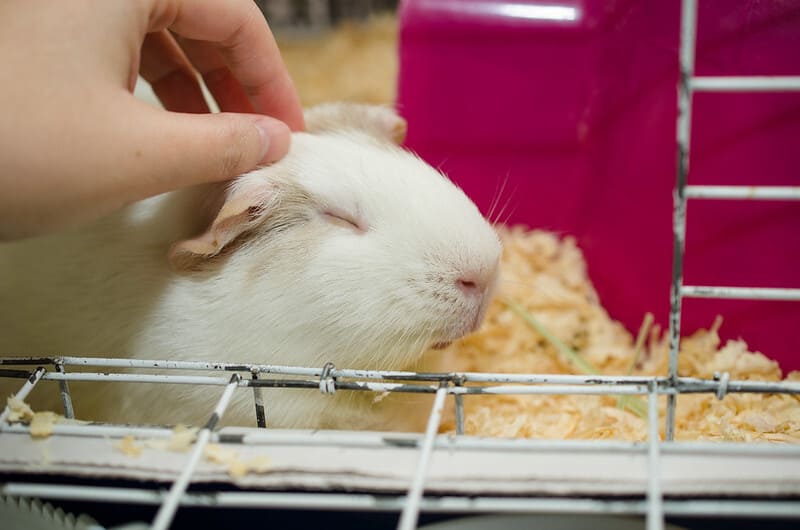
The Importance of Guinea Pig Companionship
Guinea pigs are social animals by nature, and while they may form close bonds with their human caregivers, they also benefit from the companionship of their own kind. However, it’s possible to build a deep and rewarding friendship with a guinea pig even if they are kept as a single pet. Understanding their individual personalities and taking the time to connect with them can lead to a fulfilling human-cavy relationship.
Choosing the Right Guinea Pig
Before you can make friends with a guinea pig, it’s essential to choose the right pet. When selecting a guinea pig, consider the following factors:
1. Personality
Guinea pigs have distinct personalities, and it’s important to choose a guinea pig whose temperament aligns with your own preferences. Some may be outgoing and curious, while others are more reserved. Spend time observing different guinea pigs to find one that resonates with you.
2. Age
Guinea pigs come in various age groups, including pups (young guinea pigs), adults, and seniors. Consider the age of the guinea pig that best suits your expectations and lifestyle. Pups may require more patience and training, while older guinea pigs may be more settled.
3. Gender
Decide whether you want a male (boar) or female (sow) guinea pig. Males are generally larger and may be more dominant, while females can sometimes be more territorial. Keep in mind that if you plan to keep multiple guinea pigs, it’s important to understand guinea pig reproduction and potential behavioral differences between genders.
4. Health
Choose a guinea pig that appears healthy and alert. Look for clear eyes, a shiny coat, and a lively demeanor. Avoid guinea pigs that show signs of illness or injury.
5. Source
Obtain your guinea pig from a reputable source, such as a responsible breeder, rescue organization, or animal shelter. Ensure that the guinea pig has been well-cared for and is in good physical condition.
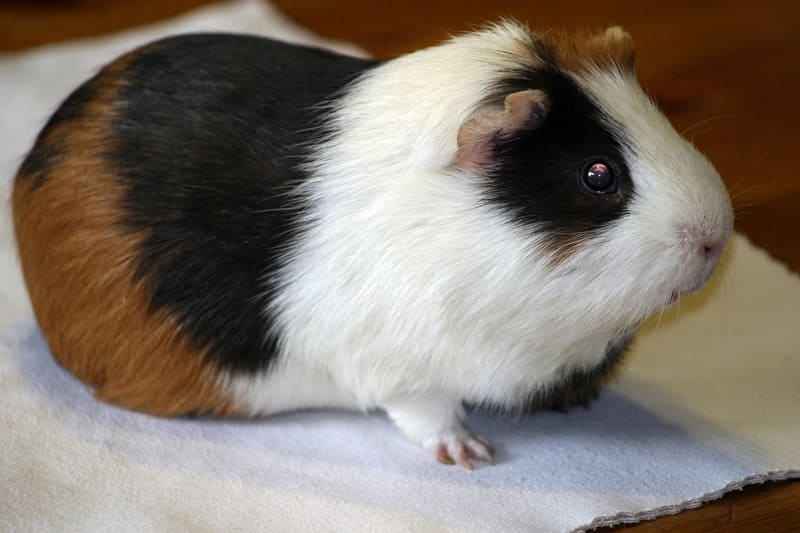
Setting Up Their Home
Before you bring your guinea pig home, it’s crucial to prepare a suitable living environment. A well-organized and comfortable habitat can make your guinea pig feel secure and at ease, which is the foundation for building a friendship. Here are the key elements to consider when setting up your guinea pig’s home:
1. Cage or Enclosure
Select a spacious and secure cage or enclosure that provides enough room for your guinea pig to move around, play, and exercise. The cage should be made of safe materials, well-ventilated, and easy to clean. Ensure it has a solid floor (not wire) to prevent injuries to their delicate feet.
2. Bedding
Use safe and comfortable bedding material to line the cage floor. Avoid cedar or pine shavings, as these can release harmful aromatic compounds. Choose alternatives like aspen shavings, paper-based bedding, or fleece liners. Provide a soft, cozy area for your guinea pig to rest and hide in.
3. Hideaways
Include hideaways or shelters in the cage to offer your guinea pig a sense of security and privacy. Guinea pigs enjoy having places to retreat to when they want to rest or feel safe. These can be as simple as igloos, tunnels, or wooden huts.
4. Food and Water
Provide a constant supply of fresh water in a drip-proof water bottle or heavy, non-tip water dish. Guinea pigs need access to clean water at all times. Offer high-quality guinea pig pellets and fresh hay daily, along with a variety of fresh vegetables. Ensure the food is fresh and free from mold or contaminants.
5. Toys and Enrichment
Enrich your guinea pig’s environment with toys and items that promote mental and physical stimulation. Guinea pigs enjoy items they can chew on, tunnels, puzzle feeders, and even cardboard boxes for exploring.
6. Socializing Area
Set up a dedicated area for socializing with your guinea pig outside of their cage. This space should be safe and free from hazards, such as cords or other pets. It’s a place for bonding, playtime, and interaction.
Initial Acclimatization
When you first bring your guinea pig home, it’s essential to provide a calm and gentle introduction to their new environment. Here’s how to help your guinea pig acclimate to their new surroundings:
1. Quiet and Calm
Keep the environment quiet and calm for the first few days to help your guinea pig adjust to their new home. Avoid sudden loud noises or disturbances.
2. Allow Exploration
Let your guinea pig explore their cage and hideaways at their own pace. Avoid overwhelming them with excessive handling or attention during the initial adjustment period.
3. Offer Treats
To establish a positive association with your presence, offer small treats, such as a piece of fresh vegetable or a small amount of their favorite food, while you sit near the cage. Allow them to approach and take the treat willingly.
4. Gentle Observation
Spend time observing your guinea pig’s behavior and habits. This can help you learn more about their preferences, likes, and dislikes.
5. Daily Routine
Stick to a daily routine to provide structure and predictability for your guinea pig. Guinea pigs feel more secure when they know what to expect in terms of feeding times and playtime.
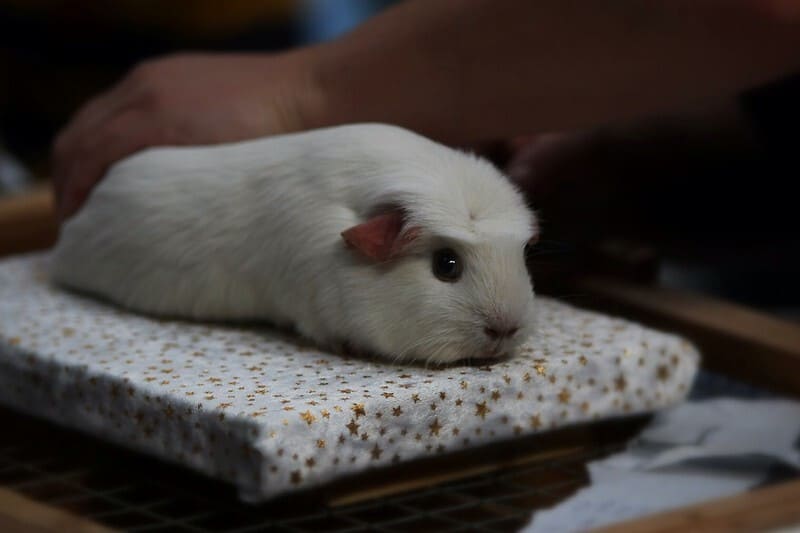
Building Trust and Making the First Moves
Building a friendship with a guinea pig requires patience and a gradual approach. Guinea pigs are naturally wary and may take some time to trust and bond with their human caregivers. Here’s how to make the first moves to build trust:
1. Approach Slowly
When you approach your guinea pig’s cage or enclosure, do so slowly and calmly. Sudden movements can startle them, and they may retreat to their hideaway.
2. Use Gentle Speech
Talk to your guinea pig in a soft and reassuring voice. Guinea pigs are sensitive to tone, and a soothing voice can help put them at ease.
3. Extend a Hand
Extend your hand toward your guinea pig, but avoid trying to touch or pick them up initially. Let them approach your hand on their terms. Offer a small treat on your open palm to entice them to come closer.
4. Offer a Treat
Guinea pigs love treats, and offering them a tasty morsel, such as a piece of carrot or a slice of bell pepper, can create a positive association with your presence. Always offer treats in moderation.
5. Patience and Observation
Be patient and observe your guinea pig’s reactions. Some guinea pigs may be more cautious and take longer to warm up, while others may be curious and approach you more quickly. Respect their individual pace.
6. Avoid Forcing Interaction
Never force your guinea pig to interact with you. Avoid grabbing or chasing them, as this can cause stress and harm the budding friendship.
7. Use Scent Familiarization
To help your guinea pig become familiar with your scent, gently rub your hands on some clean bedding or a piece of fleece. Place it in their cage for them to investigate.
8. Gradual Touch
Once your guinea pig appears more comfortable with your presence, you can try gently petting them. Start with their back or shoulders, and avoid the head area. Guinea pigs are sensitive around their faces, so take care when approaching their heads.
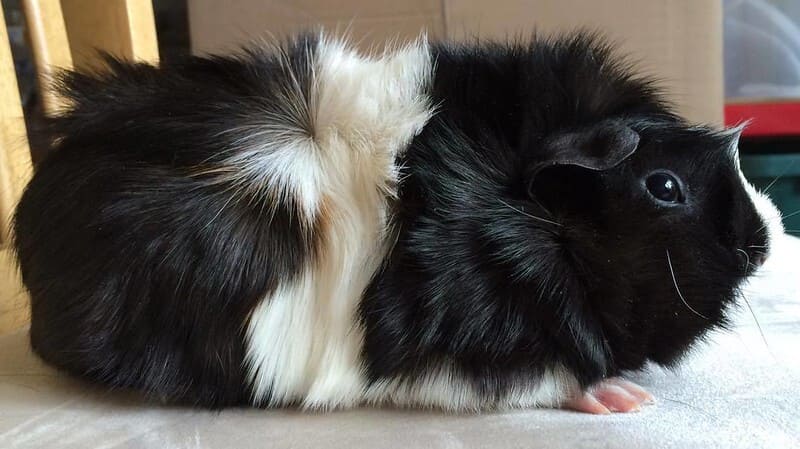
Bonding Through Regular Interaction
Building a friendship with a guinea pig is an ongoing process that requires regular interaction and bonding activities. Here are ways to deepen your connection with your guinea pig:
1. Daily Interaction
Set aside time each day for one-on-one interaction with your guinea pig. It can be as simple as sitting near their enclosure and talking to them, offering treats, and gentle petting.
2. Floor Time
Provide your guinea pig with supervised floor time outside of their cage. Ensure that the area is safe and free from hazards. Floor time allows your guinea pig to explore and play in a new environment while bonding with you.
3. Cuddle and Lap Time
Some guinea pigs enjoy cuddling and sitting on their caregiver’s lap. Use a cozy blanket or towel on your lap and allow your guinea pig to sit with you while you pet them.
4. Grooming and Brushing
Guinea pigs may enjoy being groomed or brushed with a soft brush. Grooming not only helps keep their fur clean but also deepens the bond between you and your guinea pig.
5. Socializing with a Companion
If you have multiple guinea pigs, spend time socializing with them as a group. Guinea pigs can bond with their human caregivers while enjoying the company of their fellow cavies.
6. Talking and Singing
Guinea pigs are responsive to the sound of your voice. Talk to them, sing, or read stories to create a connection through auditory stimulation.
7. Treat Training
Engage in treat training to reinforce positive behaviors and commands. For example, use treats to encourage your guinea pig to come when called or respond to simple cues.
8. Offer Favorite Foods
Identify your guinea pig’s favorite foods and offer them as special treats during bonding sessions. This can create a positive association between you and the pleasure of treats.
9. Be Patient
Remember that building a friendship with a guinea pig takes time, and each guinea pig is unique. Be patient and understanding of their individual needs and pace of socialization.
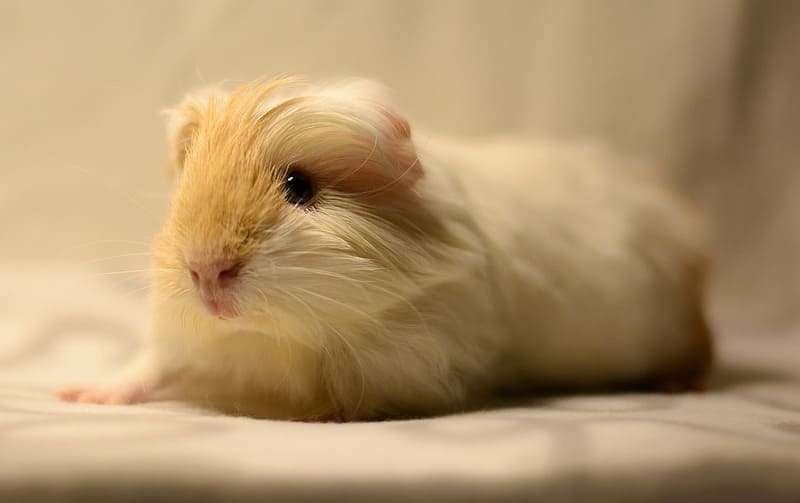
Signs of Bonding and Trust
As you continue to interact with your guinea pig, you may notice signs that indicate the development of trust and a growing bond:
1. Approaching You
Your guinea pig may approach you willingly when you enter their space. They may be curious and unafraid to explore your presence.
2. Relaxed Body Language
A relaxed guinea pig exhibits open body language, such as an upright stance with their ears and whiskers forward. They may also make purring or cooing sounds, indicating contentment.
3. Comfort with Petting
Your guinea pig may become increasingly comfortable with petting and grooming, leaning into your touch and closing their eyes in enjoyment.
4. Social Interactions
You may observe your guinea pig initiating social interactions, such as gently nudging your hand or vocalizing to get your attention.
5. Seeking You Out
Your guinea pig may actively seek you out during floor time or lap time, choosing to be close to you and enjoying your company.
6. Responding to Your Voice
Your guinea pig may respond to the sound of your voice and become attentive when you speak to them.
7. Trust in Handling
When trust is well-established, your guinea pig may allow you to pick them up and hold them comfortably without signs of stress.
8. Playful Behavior
Your guinea pig may engage in playful behaviors, such as popcorning (joyful leaps), running around, and exploring their environment while you watch.
9. Mutual Grooming
As a sign of bonding, your guinea pig may groom you by lightly nuzzling your hands or face, reinforcing the connection.
Maintaining a Loving Relationship
Maintaining a loving relationship with your guinea pig is an ongoing commitment. Here are some tips for nurturing and preserving the bond you’ve built:
1. Consistent Interaction
Continue to interact with your guinea pig daily. Regular bonding time helps reinforce the connection and provides them with social stimulation.
2. Health Care
Ensure your guinea pig receives proper healthcare, including regular veterinary check-ups, vaccinations, and dental care. Keeping them healthy is crucial for a lasting relationship.
3. Provide a Balanced Diet
Offer a balanced diet that meets your guinea pig’s nutritional needs. High-quality pellets, fresh hay, and a variety of fresh vegetables are essential for their well-being.
4. Grooming and Hygiene
Keep your guinea pig clean and groomed. Regular brushing and hygiene care help maintain their comfort and reinforce trust.
5. Safe and Enriched Environment
Create a safe and enriched living environment for your guinea pig. Regularly clean their cage, offer new toys, and ensure they have a stimulating space to play and explore.
6. Attention to Behavior
Pay attention to changes in behavior, as these can indicate health issues or emotional distress. Promptly address any concerns with a veterinarian.
7. Consider a Companion
If you have a single guinea pig, consider the possibility of introducing a compatible companion. Companionship with another guinea pig can enhance their social life and happiness.
8. Travel and Accommodations
If you need to travel with your guinea pig, provide a safe and comfortable travel carrier and accommodation. Ensure they have familiar items, such as bedding and toys, to reduce stress during the journey.
Conclusion
Building a friendship with a guinea pig is a rewarding and heartwarming experience. Guinea pigs are social and sensitive animals that can form deep bonds with their human caregivers. By choosing the right guinea pig, creating a comfortable living environment, and engaging in consistent and gentle interaction, you can build a lasting and loving relationship with your small companion.
Remember that every guinea pig is unique, and the pace of bonding may vary from one individual to another. Patience, respect for their preferences, and a willingness to adapt to their needs are key to establishing trust and fostering a fulfilling connection. A strong and loving bond with your guinea pig will lead to many joyful moments and a heartwarming companionship that enriches both your life and the life of your cavy.